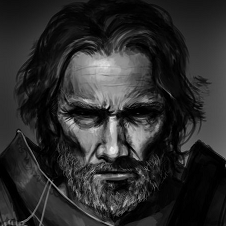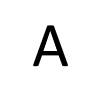-
Posts
38,417 -
Joined
-
Last visited
Content Type
Profiles
Forums
Events
Gallery
Everything posted by Ace-Garageguy
-
What's really unfortunate is that so much of the American economy is now based on no-skill (burger joints, etc.) or low-skill (landscaping, etc.) service jobs. These generate very little contribution to GDP, taxes, job satisfaction, or possibilities for career advancement and attainment of what used to be called the "American Dream". They create a poorly-paid underclass that is becoming more and more of a drain on already stressed resources, both natural and governmental. There is something very wrong, and nobody really seems to much give a damm as long as they got theirs...and don't have to work too hard for it.
-
I'm looking forward to seeing what you do with this. Your later-model work is really something. I bought one of these in pretty sad shape at the last NNL South: crushed roof pillars, etc. The plan was to build a chopped gasser on a Chevy chassis, with one of the chain-driven-blower Pontiacs from the MT Challenger kit. Someday.
- 38,772 replies
-
- johan
- glue bombs
-
(and 1 more)
Tagged with:
-
Depending on how low you want to go, with the frame assembled to the body with the glass and interior in place, you may also find that the kit wheel wells simply will not allow you to drop the car as much as you might want. It's easy enough to cut the tops of the wheel wells off (in the rear, you can sometimes just leave them missing if they don't show much) and raise them to get enough clearance. Some guys just cut the tops of the tires off, but I'm not a fan of that particular approach. It's interesting that, on a model car in 1/25 scale, just 1/16 of an inch lower or higher can make a huge difference in the stance of a car, and in how good (or goofy) it looks on first impression. That 1/16" is about 1.5" in full scale, and that's a lot when you're building real cars. To get the stance I wanted on this one, I had to cut rather a lot off of the tops of the rear wheel wells, and provide a 'bump' for the frame rails to be notched in to. This shot shows the rear wheelwells reassembled and raised, with spacers of strip styrene inserted. I also had to make a new central floor section to clear the axle pumpkin.
-

1/25 Revell '29 Model A Roadster 2'n'1
Ace-Garageguy replied to mrknowetall's topic in Car Kit News & Reviews
Long as whatever they put in it is accurate, I'll be happy. -

Potvin Blower - Why?
Ace-Garageguy replied to chunkypeanutbutter's topic in Model Building Questions and Answers
Check out the minuscule belt-wrap on the pulley of the SCoT blower on the top photo in post #30. That's really gonna slip. And that's not gonna make any boost at all. Notice that even the centrifugal blowers in the lower shots have 3 and 4 pulley sheaves. -

1/25 Revell '29 Model A Roadster 2'n'1
Ace-Garageguy replied to mrknowetall's topic in Car Kit News & Reviews
Yup. -

The French Connection
Ace-Garageguy replied to Greg Myers's topic in General Automotive Talk (Trucks and Cars)
Isn't this the stash of Ford flathead industrial engines that came to light quite a few years back? -
The Duplicolor products are lacquers unless specifically labeled "enamel". I don't recall if Duplicolor does a straight black, but they do at least one metallic or pearl black. And yes, they do a good clear too. BUT...Testors lacquers work perfectly over all of Duplicolor's primers mentioned above. This is one instance where mixing products from different manufacturers works well. Lotsa guys here use Testors lacquer colors and clears over Duplicolor primers...like this one of mine.
-
Yeah, more people than ever before expect to get paid for knowing nothing and doing nothing.
-
'33 Plymouth chassis just back from paint shop, going together. A tiny sample of my plumbing (I've built 90% of this car). The engine (which I did not build, though I did the FI and all the plumbing and electronics). Complete chassis, awaiting painted body.
-
Nice project, looks great so far. I don't know if you've driven one of these, but they're really great little cars. Fast, handle very well.
-
-
I guess the segment of the industry that's on the verge of printing living replacement organs for humans is "a step behind" then. Nah. I certainly don't deny that individual tinkerers and the "open source community" make a LOT of strides, with little funding. But to write off what's happening among well-funded R&D professionals is just as misguided as missing the point of what you're doing. Nothing is developed in a vacuum, especially these days, and everyone's work is somewhat dependent on the developments made before them, by others...whether garage-geniuses or industrial R&D worker bees. And it will be industry and crass commercialism that puts $200-retail, plug-and-play machines with resolution better than yours on most modelers' workbenches.
-
Got a little sumthin' from Hong Kong, and another one from Japan yesterday. Soon to be moving into entirely new subject matter for me.
- 38,772 replies
-
- johan
- glue bombs
-
(and 1 more)
Tagged with:
-
It's like, really hard to know there's a customer, like, when you're so busy checking your texts and facebook all day. You'd have to, like, look up from your iPhone.
-

Real or Model #233 FINISHED!
Ace-Garageguy replied to Harry P.'s topic in Real or Model? / Auto ID Quiz
Yup...the road surface looks kinda like fabric, the tire sidewall bulges don't really show, the soft-focus-poor-depth-of-field image...all make it look model-like. -
I paint a lot of small metal parts in the big-car shop. Nick is right on about self-etching primer. It comes in rattlecans (Duplicolor green is my favorite...and it's VERY thin) at the auto-parts store. Clean your bare metal parts with isopropyl alcohol to get any oils or coatings off of them, and spray away. If you need a surfacing primer, any of the Duplicolor products (including their paints) can be used over the self-etch. Testors lacquers will work fine too.
-

What's "Traditional" ?
Ace-Garageguy replied to Greg Myers's topic in General Automotive Talk (Trucks and Cars)
Yeah, I know exactly what you are. You make it very obvious. What a nice fella. -
Actually, I'm seeing rather a lot of people, both young and older, who are looking forward to the possibilities this tech promises (including me, because I've been watching the industrial development of this stuff for years), but saying it's just around the corner is pretty far off of the mark. People saying the model companies will be printing in-house seem to miss another mark, too. It takes only a few minutes to cycle an injection-molding die to produce one kit. It takes hours of printing to produce one decent frame. Yeah, that's cost effective manufacturing at its best. And being able to text incessantly, scroll through pictures on your iPhone, post useless social crapp on fazebook etc.etc. may qualify even ol' Presbo as "tech savvy", but it just aint. What percentage of modelers actually DO SOMETHING with tech? And I don't mean gaming, socializing and being entertained...or marketing. One more point that's been brought up before...how many modelers today have mills and lathes, even small ones? How many scratch-build ? How many do the actual hard stuff ? My point is that until this tech becomes almost idiot-proof and CHEAP, it's not going to be on many modelers benches.
-

What's "Traditional" ?
Ace-Garageguy replied to Greg Myers's topic in General Automotive Talk (Trucks and Cars)
Semantics. Word usage. Accepted meanings. "Traditional" is simply used these days to describe a build-style of subject matter that was popular in the defining days of the hot-rod and custom movement, post-WW II through somewhere in the '60s. That's all it means. -
You're far from the average modeler. Can your machine be duplicated for $200 ? (I don't mean build it yourself, either).That's what it will take to put them in just a small percentage of home workshops. And you do your own digital modeling, right ? How many modelers are going to learn that ? Many of them don't even understand the concept of "scale".
-
That diagram is pretty old-school, though. Still running pills for mixture adjustment, and basically the same setup as cars of the '60s (with the addition of the port distribution block).
-
There's no question it's coming, but we're still waiting for good enough print resolution from an "affordable" consumer-level desktop machine large enough to print a 1/24 scale body shell. That's really the only holdup at this point, and it may be a while. As easy as many folks prefer things to be, they're going to want this stuff to be no-effort. The days of simple "select model, press enter to print it" aren't gonna be here any time real soon. And what do modelers consider affordable? $2000 ? $200 ? I still think it makes more sense to deploy commercial-quality printers in hobby shops, and do the printing there. That would eliminate the need for inventory of anything other than the print materials, but still create retail traffic while the tech filters down to the desktop level. Remember the days before everyone had a desktop 2D printer / copier? Yeah, like that.
